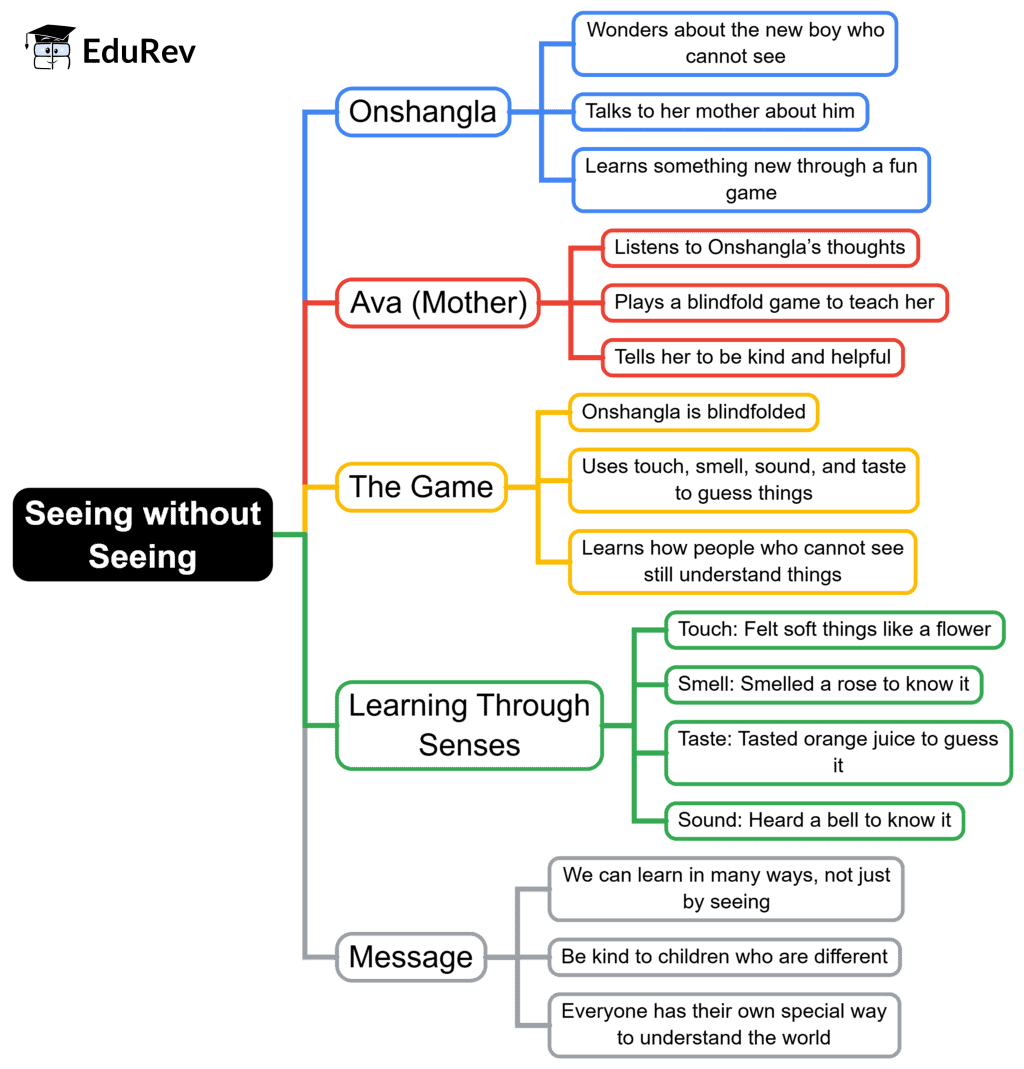Class 2 Exam > Class 2 Notes > English for Class 2 (Mridang) > Mind Map: Seeing Without Seeing
Mind Map: Seeing Without Seeing | English for Class 2 (Mridang) PDF Download

The document Mind Map: Seeing Without Seeing | English for Class 2 (Mridang) is a part of the Class 2 Course English for Class 2 (Mridang).
All you need of Class 2 at this link: Class 2
|
19 videos|250 docs|13 tests
|
FAQs on Mind Map: Seeing Without Seeing - English for Class 2 (Mridang)
| 1. What does "Seeing Without Seeing" refer to in the context of Class 2? |  |
Ans. "Seeing Without Seeing" explores the concept of perception beyond traditional visual inputs, emphasizing how individuals can interpret their surroundings using other senses or cognitive processes. This might include understanding non-verbal cues, spatial awareness, and emotional intelligence.
| 2. How can students apply the concept of "Seeing Without Seeing" in their daily lives? |  |
Ans. Students can apply this concept by enhancing their awareness of their environment through listening, touching, or using intuition. Engaging in activities like mindfulness or observation exercises can help them develop skills to perceive more than just visual information.
| 3. What are some practical activities that can help reinforce the lessons from "Seeing Without Seeing"? |  |
Ans. Practical activities include sensory walks where students focus on sounds and smells, storytelling exercises that encourage imagination beyond visual images, and games that challenge them to identify objects or emotions without sight, fostering a deeper understanding of perception.
| 4. How does "Seeing Without Seeing" connect to emotional intelligence in Class 2? |  |
Ans. The concept relates to emotional intelligence by teaching students to recognize and interpret emotions in themselves and others without relying solely on visual cues. This can enhance empathy, communication skills, and social awareness among classmates.
| 5. What role does imagination play in "Seeing Without Seeing" for young learners? |  |
Ans. Imagination plays a crucial role as it allows young learners to visualize scenarios, create mental images, and understand concepts that are not immediately visible. It encourages creativity and helps them to process experiences and feelings in a more holistic manner.
Related Searches
















